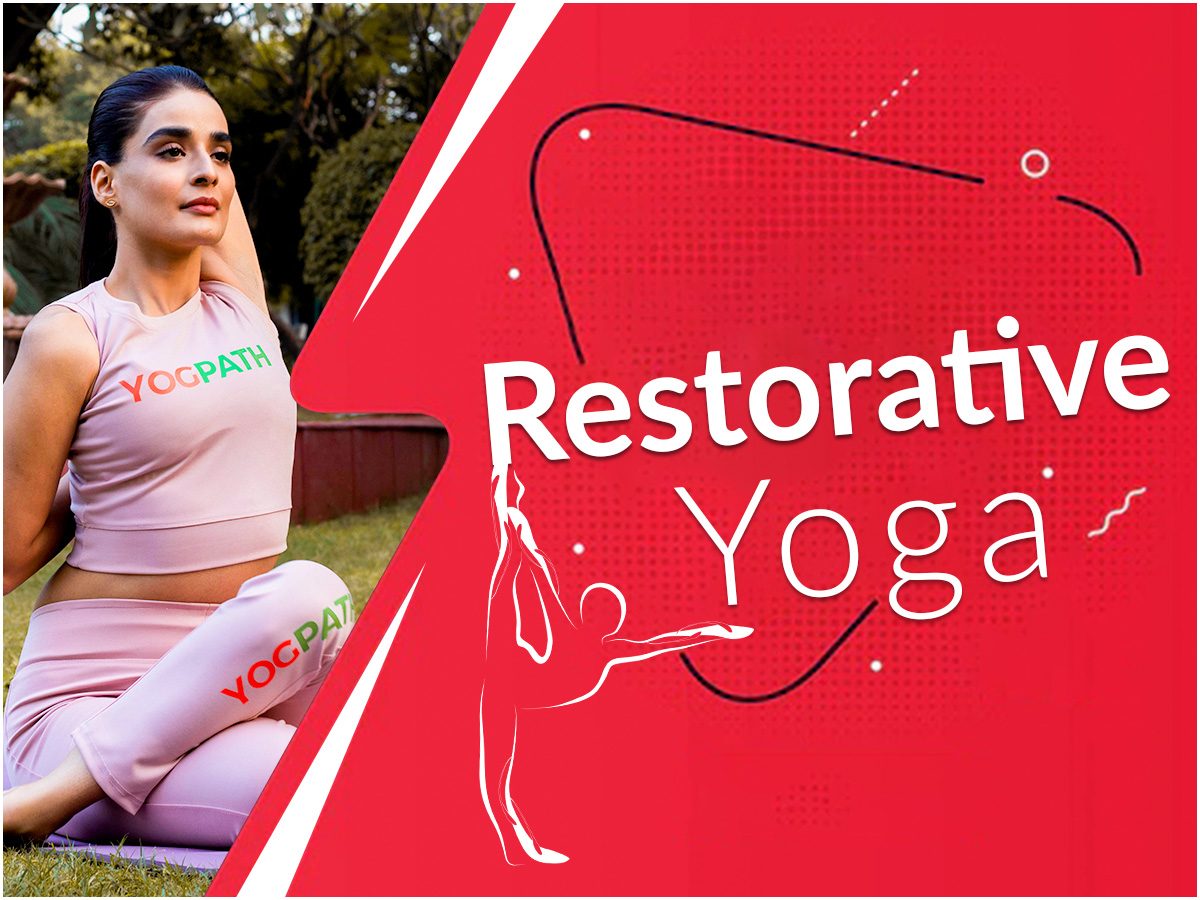
The practise of yoga has a wealth of benefits for both the body and the mind, but when the pace of our lives quickens, it’s possible that our minds and bodies will do the same. Our thoughts begin to race, and we may experience feelings of being overpowered or exhausted. It is possible for us to become overstimulated if, in addition to practising yoga, we are also drawn to other forms of exercise that are of a high intensity. When this happens, our nervous systems are assaulted.
Even if we only manage to fit in one session of restorative yoga per week, this practise can help us strike a better balance in our hectic lives and has the potential to heal a wide variety of ailments that are caused by stress on a physical and emotional level. In a Restorative Yoga class, the students use various props such as bolsters, blankets, and blocks to fully support their bodies in various poses, and they typically hold each pose for up to ten minutes. Because there is no need to exert any muscular effort, restorative yoga is an excellent practise to try if you suffer from a chronic illness or are making a full recovery from an injury.
Advantages of practising restorative yoga
The fact that we are not required to tense our muscles is one of the many advantages of practising restorative yoga. When it comes to increasing our range of motion, we frequently have the misconception that we need to “work” at it. However, the truth is that we can open up more by letting go of tension and softening our bodies than by forcibly working our way through a vigorous and dynamic asana practise.
The approach taken is the primary distinction. In a sequence of restorative yoga, we still stretch, but we are encouraged to fully relax in the stretch with the assistance of the props so that we can let go of tension and concentrate on the breath. This allows us to release tension and improve our ability to focus on the breath. The activation of the parasympathetic nervous system, which is responsible for the process of resting and digesting food, is facilitated for us as a result of this. This helps combat the feeling of being in “overdrive,” which is a state that we frequently find ourselves in.
Because our bodies and minds become more malleable, this indicates that we also have the capacity to create the space necessary to get in touch with our innate capacities for compassion and understanding of both ourselves and others.
The advantages of restorative yoga
Helps the body achieve a state of profound relaxation
Calms down a frantic mind
Tension in the muscles is released, leading to improved mobility and flexibility.
Enhances the body’s natural capacity for healing and balancing
Brings the nervous system back into balance
Increases one’s resistance to illness
Fosters qualities of compassion and self-understanding as well as understanding toward other people.
Do you remember what it was like to feel completely relaxed, with your body being pliable, warm, and soft? Do you ever remember being so at ease in your own skin that you hardly paid attention to the body it was housed in?
And what about that carefree sensation of looking on at everything from a distance with a big smile on your face, absolutely certain that everything is fine precisely as it is? When you reach this point, you realise that life is perfect just the way it is and that there is nothing for you to change about it.
Do you have any recollection of what it was like to find peace in your authentic self? The realisation that you are not distinct from life, in the same way that the air inside a balloon is not distinct from the air outside of the balloon or that a wave is not distinct from the ocean.
The goal of yoga should be to achieve union as its ultimate goal. to see through the delusion of one’s identity as a distinct being. to realise that the fundamental component of each and every being is energy, and that this energy is shared among all things.
By practising restorative yoga, you can learn to relax deeply and come to appreciate the power of sometimes doing nothing (resting in the now) as one of the most beneficial, sustaining, and therapeutic activities available to you. “Resting in the now” describes the act of focusing solely on the here and now. This is something I have learned through practising restorative yoga.











